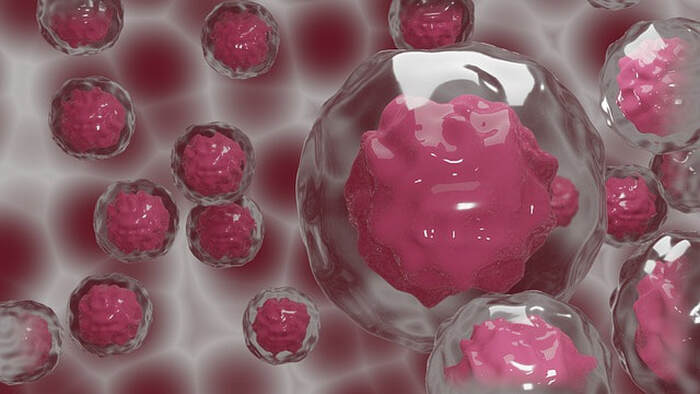Using Stem Cells to Treat Type 1 Diabetes
Type 1 diabetes (T1D) is a disease in which the pancreas is not able to produce sufficient amounts of insulin, an important hormone. Insulin is required to transport glucose from the food one eats into the body’s cells, which generate energy by using glucose. T1D is usually caused by an issue with the islet beta cells in the pancreas that produce insulin. Typically, diabetics take insulin shots to help manage their blood glucose levels, which although effective, is neither very convenient nor a cure for the disease. That is why other options, such as stem cells, have the potential to be more permanent treatments for T1D.
Stem cells are a special type of cell that have not developed into a specific type of cell yet. Therefore, they have the potential to be developed into a cell, tissue, or organ that can then be transplanted to make up for the loss of function of damaged cells. Stem cells are difficult to study because they can be hard to obtain, and the differentiation of stem cells is not well understood. These issues, along with the fact that stem cells are a relatively new therapeutic, mean that they still have a long way to go before they can be widely used to safely treat not only T1D, but also a number of other illnesses and injuries.
Stem cells are a special type of cell that have not developed into a specific type of cell yet. Therefore, they have the potential to be developed into a cell, tissue, or organ that can then be transplanted to make up for the loss of function of damaged cells. Stem cells are difficult to study because they can be hard to obtain, and the differentiation of stem cells is not well understood. These issues, along with the fact that stem cells are a relatively new therapeutic, mean that they still have a long way to go before they can be widely used to safely treat not only T1D, but also a number of other illnesses and injuries.
Image Source: doodlartdotcom
While researchers have performed stem cell transplants on mice, and were able to control their development into functional beta cells, clinical trials involving humans are still in their infancy. However, innovations in developing pancreatic stem cells, and devices that can administer the cells effectively, have led to interest in using stem cells to treat T1D in humans. In a 2021 trial conducted at the University of British Columbia, patients with T1D received a transplant of stem cells that would become beta cells. The process involved suppressing their immune systems to ensure that the transplanted cells would not be rejected by the body. One of the main ways the patients were monitored was by using a blood test known as the hemoglobin A1C test (HbA1C), which measures a patient’s average blood glucose levels over three months. While no participant in the trial became completely independent of their insulin medication while also maintaining normal HbA1C results, one required 50% less insulin one year after the stem cell transplant. Other participants saw their insulin dependence decrease as well, though not as significantly. These decreases mean that the stem cells were able to develop into mature and functional beta cells.
It is important to note that these trials are the beginning of a long road to finding a permanent cure for T1D using stem cells. The science behind this therapy is still far from perfect and will require more research in order to ensure it is dependable. It is partly for this reason that this clinical trial had a very small sample size of only 15 participants, making its results less powerful. However, this discovery is still exciting because it shows the possibility of being able to create functional beta cells to replace defective ones causing T1D.
It is important to note that these trials are the beginning of a long road to finding a permanent cure for T1D using stem cells. The science behind this therapy is still far from perfect and will require more research in order to ensure it is dependable. It is partly for this reason that this clinical trial had a very small sample size of only 15 participants, making its results less powerful. However, this discovery is still exciting because it shows the possibility of being able to create functional beta cells to replace defective ones causing T1D.
Featured Image Source: stevepb
RELATED ARTICLES
|
Vertical Divider
|
Vertical Divider
|
Vertical Divider
|






